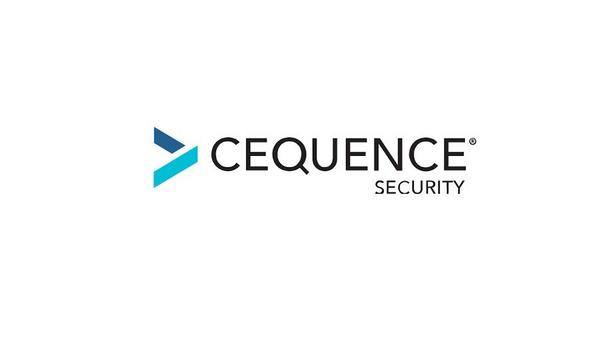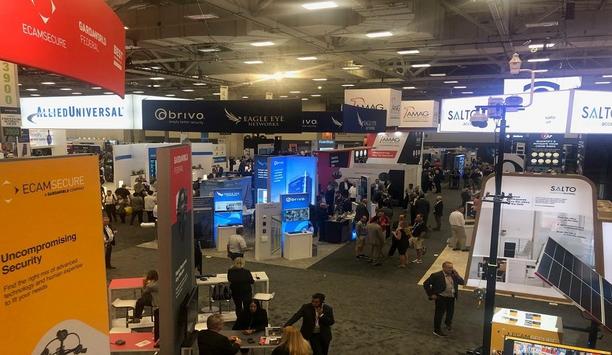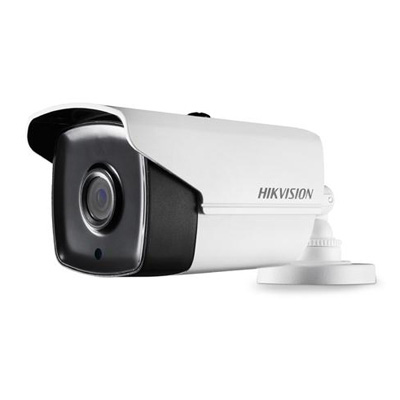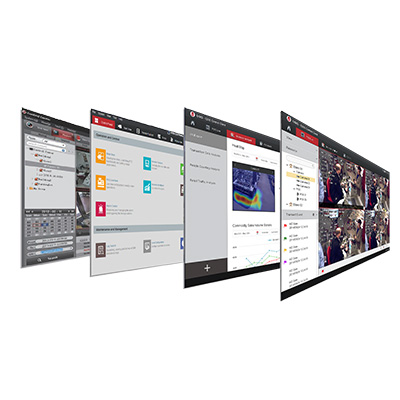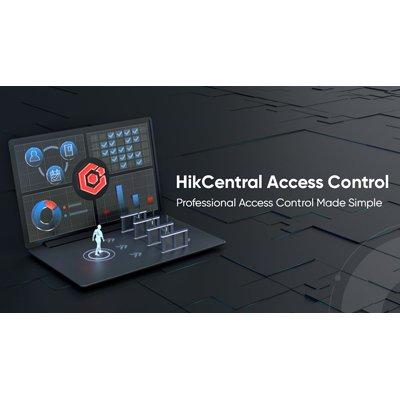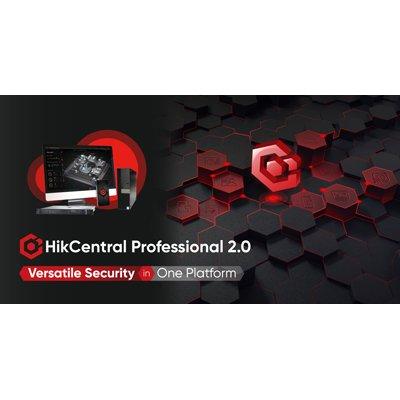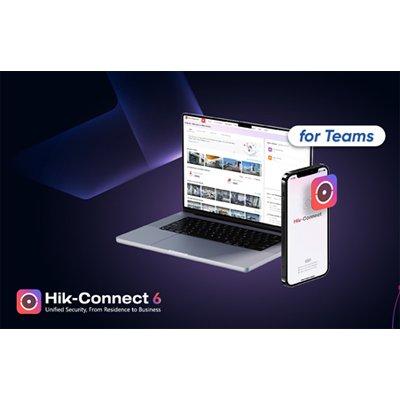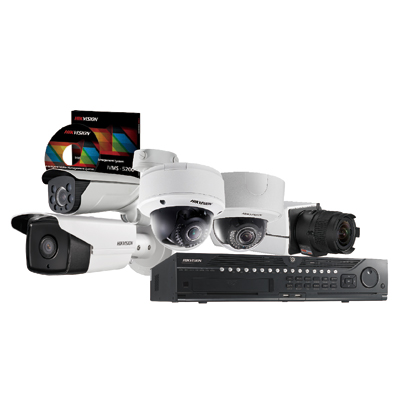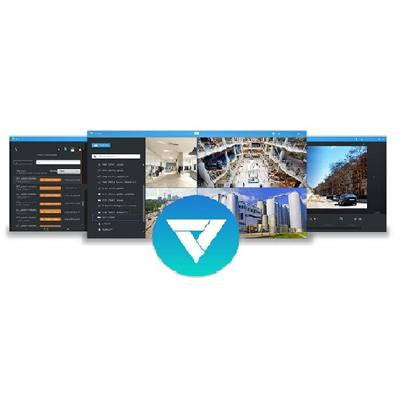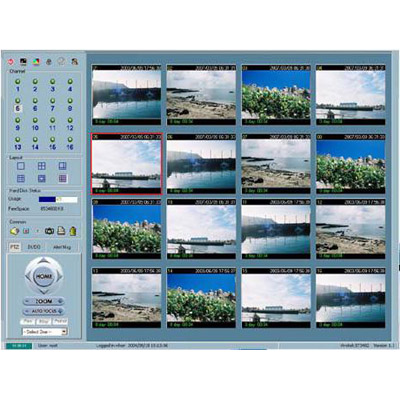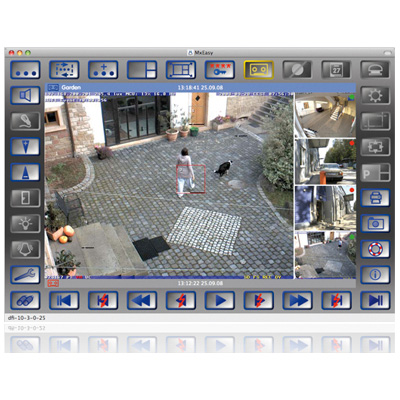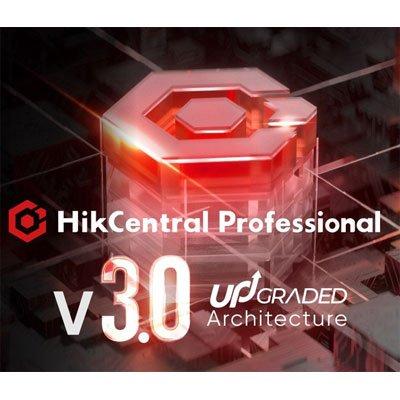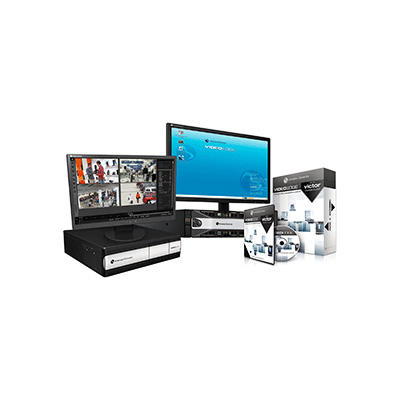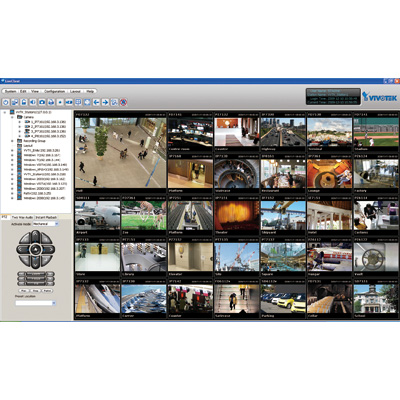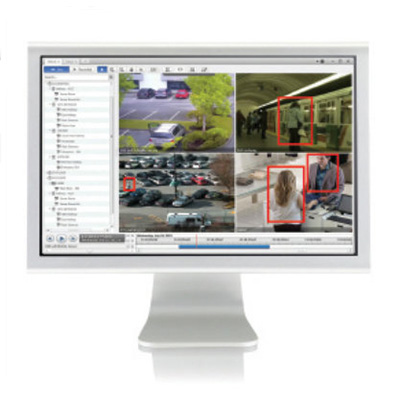Security software
Kaseya, the pioneering provider of AI-powered cybersecurity and IT management software, began its Kaseya Connect 2025 conference in Las Vegas by celebrating its global customer community and unveiling a new set of technology and commercial innovations. Thousands of attendees are connecting and sharing best practices to grow faster, improve service quality, and operate more efficiently – all powered by the company’s flagship AI-powered platform, Kaseya 365. Latest Kaseya 3...
Colt Technology Services (Colt), the digital infrastructure company, announced an expansion to its multi-award winning On Demand Network as a Service (NaaS) platform with the addition of new features designed to enhance businesses’ cloud services, boost resilience and provide greater autonomy for organisations needing flexibility, security and choice in the dynamic market environment. The three new features - available now - are On Demand Diversity, Dedicated Cloud Ports and new Multi-Ven...
Everon, LLC, a pioneering security integrator and premier provider of commercial security, video, fire and life safety solutions in the U.S., announced its award of a Sourcewell cooperative purchasing contract in the state and local government category. This contract allows Everon to expand its extensive portfolio of offerings and services to public agencies across the U.S. Cost-effective and efficient solutions Sourcewell serves government, education, and nonprofit corps across the...
Intercede, a pioneering digital identity management company, announced the launch of its latest version of MyID CMS that enables the management of Passkeys with Microsoft Entra ID. Administrators can now use the credentials management system to seamlessly manage FIDO Passkeys on devices including the Yubico YubiKey family of products, that can then be used to securely authenticate to Entra ID protected resources. Integrating Entra ID’s robust FIDO2 The solution enables corps to use seam...
Richter, a consulting firm specialising in civil, structural and geotechnical engineering, has selected Red Helix, a market pioneer in cyber security and network performance, to strengthen its cyber security. The collaboration has empowered Richter to better manage IT risks, streamline compliance processes and successfully secure major infrastructure projects, including work on the UK’s high-speed rail project, HS2. Cybersecurity and risk management Operating within a globally interconn...
HID, pioneer in trusted identity and access management solutions, announced the launch of HID Integration Service, a platform that integrates physical security, cybersecurity and digital identity management. This integration platform-as-a-service (IPaaS) was designed to empower application developers, solution integrators and software vendors to seamlessly and rapidly integrate essential physical security solutions, streamlining processes and enhancing system interoperability. Integration...
News
Genetec Inc., the pioneer in enterprise physical security software, announced the AutoVu™ ANPR Analysis Reports plugin, an advanced investigation tool that expands ANPR-based forensic search capabilities within Genetec™ Security Centre. The new plugin empowers law enforcement officers and investigators to quickly narrow down a pool of suspects using vehicle behaviour patterns—specifically driving speed and travel cohorts. By eliminating manual data sorting and enabling targeted, efficient analysis, the tool is designed to save investigators critical time. Behaviours in vehicle data “This plugin gives investigators what they need to close cases faster,” said Steve Hins, Product Group Manager, ANPR at Genetec Inc. “With just a few clicks, they can spot patterns and behaviours in vehicle data that would otherwise take hours or days to uncover manually.” AutoVu ANPR Analysis Reports The AutoVu ANPR Analysis Reports plugin offers two key functionalities: With the Cohort Analysis feature, investigators can identify vehicles that consistently travel with another vehicle of a known licence plate—revealing patterns that may point to coordination, accomplices, or organised criminal activity. Instead of manually reviewing read reports, officers can input a known plate, select relevant ANPR cameras, and define how often vehicles appear together (e.g., within a few seconds, across multiple cameras). The system then identifies potential vehicle cohorts instantly. In cases like organised retail theft, this is especially valuable: a known suspect vehicle might be linked to multiple incidents, and cohort analysis can reveal if another vehicle, such as a getaway car, is consistently nearby, helping investigators quickly narrow down their pool of suspects. The Time and Speed Analysis feature enables investigators to quickly identify vehicles exhibiting outlier behaviour, such as those fleeing a crime scene, by comparing the estimated speed of vehicles travelling between two ANPR cameras. Officers simply select cameras located within a zone of interest and define a time frame (e.g., one to five minutes). The system then generates a report listing all vehicles that passed both cameras, along with their estimated speeds. This enables investigators to immediately spot anomalies—such as a vehicle travelling 60 mph in an area where most were going 30—without sifting through thousands of licence plate reads. In incidents like a hit-and-run, this tool helps pinpoint suspects in seconds by revealing which vehicles sped through a defined area right after the event. Availability The AutoVu ANPR Analysis Reports plugin is available globally as a paid add-on for Security Centre, through the Genetec network of accredited channel partners.
Skills for Security welcomes EFT Group as a new sponsor, further strengthening its mission to develop the next generation of skilled professionals in the fire and security industry. As one of the UK’s pioneering fire and security training providers, Skills for Security works closely with industry partners to improve training standards and create real opportunities for young people entering the sector. Next generation of skilled engineers Speaking on the partnership, Jordan Duggan, Group Director at EFT Group, said: "At EFT Group, we are passionate about investing in the future of our industry." "Supporting Skills for Security is an important step in ensuring young professionals have access to training programmes and hands-on experience they need to succeed. We’re excited to contribute to the development of the next generation of skilled fire and security engineers." Fire, security and electrical services The new sponsorship will see EPT Group contribute to growing training options, ensuring apprentices EFT Group is a pioneering provider of fire, security and electrical services, delivering high-quality solutions across various sectors, including residential, commercial, and public services. The new sponsorship will see EFT Group contribute to expanding training opportunities, ensuring apprentices gain practical, real-world experience with smart security solutions. Their involvement is a testament to the growing recognition across the industry that investment in training is essential for long-term success. Impressive list of sponsors David Scott, Managing Director of Skills for Security, added: "Collaboration with industry pioneers is key to ensuring we provide the highest standard of training. Having EFT Group on board as a sponsor further enhances our ability to deliver hands-on learning experiences and equip apprentices with the skills they need to thrive in the fire and security industry. Their commitment to professional development aligns perfectly with our mission." The new partnership follows an impressive list of sponsors recently joining Skills for Security. This includes most recently Nimbus Digital and Gallagher Security as platinum partners and Videcon, Eagle Eye Networks, and Paxton Access Control who joined to enhance training opportunities for its apprentices.
SMARTSHOOTER, a world pioneer in fire control systems, will showcase its handheld and remotely controlled SMASH solutions at the DEFEA 2025 defence exhibition in Athens, Greece. The company will present its combat-proven SMASH 3000 Fire Control System and the SMASH Hopper Light Remotely Controlled Weapon Station (LRCWS), demonstrating advanced capabilities for counter-UAS (CUAS), maritime security, border defence, and perimeter protection. SMARTSHOOTER’s SMASH technology Combat-proven and in operational use by defence, homeland security and border protection forces across Israel, the UK, Europe, the USA, India, and more, SMARTSHOOTER’s SMASH technology dramatically increases operational effectiveness by ensuring each round finds its target. The SMASH 3000 is a lightweight, day/night capable fire control system that enables precise target engagement in complex operational environments—on land, at sea, and in the air. Designed for integration with C4I systems, battle management software, and external sensors, the SMASH 3000 supports tactical, multi-layer defence operations and can function as both a standalone solution and a component of a networked CUAS or perimeter protection architecture. SMASH Hopper securing maritime borders The SMASH Hopper is ideal for securing maritime borders, protecting critical infrastructure The SMASH Hopper, a modular, rapidly deployable LRCWS, is designed to address evolving threats from a safe distance. Easily integrated onto manned or unmanned platforms—such as vehicles, naval vessels, UGVs, and fixed observation points—it combines precise fire control with multi-mission flexibility. Controlled remotely, the SMASH Hopper is ideal for securing maritime borders, protecting critical infrastructure, and delivering short-range CUAS defence when paired with radar and command-and-control units. How SMASH systems support mission success Michal Mor, SMARTSHOOTER CEO, commented: “At DEFEA, we’re focusing on how our SMASH systems support mission success in maritime, border, and tactical environments. From handheld rifles to remotely controlled weapon stations, our technology transforms standard weapons into smart, precise, and effective defence systems." "Whether defending forces on the ground or securing national borders, SMASH delivers the accuracy needed to counter modern-day threats—including drones.”
Cequence Security, a pioneer in API security and bot management, announces significant enhancements to its Unified API Protection (UAP) platform to deliver the industry’s first comprehensive security solution for agentic AI development, usage, and connectivity. This enhancement empowers organisations to secure every AI agent interaction, regardless of the development framework. By implementing robust guardrails, the solution protects both enterprise-hosted AI applications and external AI APIs, preventing sensitive data exfiltration through business logic abuse and ensuring regulatory compliance. Ensuring regulatory compliance There is no AI without APIs, and the rapid growth of agentic AI applications has amplified concerns about securing sensitive data during their interactions. These AI-driven exchanges can inadvertently expose internal systems, create significant vulnerabilities, and jeopardise valuable data assets. This new layer of security enables customers to detect and prevent AI bots such as ChatGPT Recognising this critical challenge, Cequence has expanded its UAP platform, introducing an enhanced security layer to govern interactions between AI agents and backend services specifically. This new layer of security enables customers to detect and prevent AI bots, such as ChatGPT from OpenAI and Perplexity from harvesting organisational data. Unidentified user agents Internal telemetry across Global 2000 deployments shows that the overwhelming majority of AI-related bot traffic, nearly 88%, originates from large language model infrastructure, with most requests obfuscated behind generic or unidentified user agents. Less than 4% of this traffic is transparently attributed to bots like GPTBot or Gemini. Cequence’s ability to detect and govern this traffic in real time, despite the lack of clear identifiers, reinforces the platform’s unmatched readiness for securing agentic AI in the wild. External AI harvesting attempts Key enhancements to Cequence’s UAP platform include: Block unauthorised AI data harvesting: Understanding that external AI often seeks to learn by broadly collecting data without obtaining permission, Cequence provides organisations with the critical capability to manage which AI, if any, can interact with their proprietary information. Detect and prevent sensitive data exposure: Empowers organisations to effectively detect and prevent sensitive data exposure across all forms of agentic AI. This includes safeguarding against external AI harvesting attempts and securing data within internal AI applications. The platform's intelligent analysis automatically differentiates between legitimate data access during normal application usage and anomalous activities signalling sensitive data exfiltration, ensuring comprehensive protection against AI-related data loss. Discover and manage shadow AI: Automatically discovers and classifies APIs from agentic AI tools like Microsoft Copilot and Salesforce Agentforce, presenting a unified view alongside customers’ internal and third-party APIs. This comprehensive visibility empowers organisations to easily manage these interactions and effectively detect and block sensitive data leaks, whether from external AI harvesting or internal AI usage. Seamless integration: Integrates easily into DevOps frameworks for discovering internal AI applications and generates OpenAPI specifications that detail API schemas and security mechanisms, including strong authentication and security policies. Cequence delivers powerful protection without relying on third-party tools, while seamlessly integrating with the customer’s existing cybersecurity ecosystem. This simplifies management and security enforcement. Enterprise software applications "Gartner® predicts that by 2028, 33% of enterprise software applications will include agentic AI, up from less than 1% in 2024, enabling 15% of day-to-day work decisions to be made autonomously. We’ve taken immediate action to extend our market-renowned API security and bot management capabilities," said Ameya Talwalkar, CEO of Cequence. Ameya Talwalkar adds, "Agentic AI introduces a new layer of complexity, where every agent behaves like a bidirectional API. That’s our wheelhouse. Our platform helps organisations embrace innovation at scale without sacrificing governance, compliance, or control." These extended capabilities will be generally available in June.
Bugcrowd, a pioneer in crowdsourced cybersecurity, announces the launch of the first-ever offering to apply the scale, agility, and incentive-driven power of crowdsourcing to red teaming. This new service connects customers with a global network of vetted ethical hackers for a variety of red team engagements — fully managed through the Bugcrowd Platform. This release sets a new benchmark in the red team services market, enabling organisations to test their security environments with the highest level of confidence. By tapping into a global pool of experts using the latest adversarial tactics, techniques, and procedures (TTPs), customers gain unparalleled insight into how real-world attackers would attempt to breach their defenses. Surpassing competing services Available on the Bugcrowd Platform, RTaaS works seamlessly alongside offerings such as Penetration Testing as a Service, Managed Bug Bounty, and Vulnerability Disclosure Programs. RTaaS works seamlessly alongside offerings such as Penetration Testing as a Service Bugcrowd customers can tailor their RTaaS engagements to meet specific needs, budget constraints, and organisational maturity. Through Bugcrowd’s global talent pool of vetted, trusted ethical hackers, customers can secure the exact expertise they need and scale their RTaaS program over time, surpassing competing services on the market. Sizable security workforce “Traditionally, red teaming was only possible for large organisations that could either afford the services of security consultants or had a sizable security workforce to manage the workload alongside daily operations — and even then, findings were too often not actionable. Bugcrowd’s industry-first offensive crowdsourced RTaaS bridges this critical security gap, opening the door for our customers to access high-end capabilities that deliver crucial insights into their defensive posture — continuously,” says Dave Gerry, CEO of Bugcrowd. He adds, “Bugcrowd was founded on the bug bounty hunter mindset, an objective that aligns perfectly with Red Team operators. This launch is a significant milestone for Bugcrowd as it brings a pioneering solution to life. We are excited to see the power of The Crowd in action in RTaaS and enhance our customers’ always-on approach to security testing.” Sophisticated campaigns of cybercriminals Due to the persistent and sophisticated campaigns of cybercriminals, the cost of breaches continues to rise Due to the persistent and sophisticated campaigns of cybercriminals, the cost of breaches continues to rise. As enterprise environments become more complex, organisations understand the need to stay ahead of these advanced threats. While pen testing and bug bounties will remain crucial tools in identifying vulnerabilities, Bugcrowd RTaaS enhances organisational preparedness by simulating real-world attacks, allowing understanding of detection and response capabilities, and exposing gaps in security controls that traditional testing may miss. Traditional bug bounty “As a hacker, I’m genuinely excited about Bugcrowd’s new Red Team as a Service (RTaaS) offering. RTaaS builds on the strengths of traditional bug bounty and Penetration Testing as a Service, taking them to the next level by allowing organisations to safely test their defenses against real-world attack scenarios,” said Matt Byrdwell, aka Nerdwell, ethical researcher and hacker at Bugcrowd. He adds, “Red Teaming is the most effective way to evaluate how well an organisation’s layered security controls work together to create a true defense-in-depth strategy — and to safely identify any gaps. By simulating realistic attacks in a structured, controlled environment, RTaaS is a great way for cybersecurity teams to demonstrate the value of a strong security posture to both the business and its leadership.” Regulation-ready scenarios Key features of RTaaS on the Bugcrowd Platform: Threat intelligence aligned with realistic scenarios: Bugcrowd RTaaS Integrates threat intelligence and risk profiling to simulate realistic, regulation-ready scenarios. Real-world adversarial tactics: Operators mimic the behaviours of nation-state actors, organised cybercriminals, and insider threats to authentically test an organisation’s ability to detect, respond to, and contain advanced attacks. Global pool of specialised operators: Access a diverse network of vetted operators skilled in advanced tactics tailored to their environment and threats. Integrated platform and workflows: Receive comprehensive reports with visual attack chains, attack narratives, and findings mapped to root causes and security controls. Scalable and flexible: Capitalise on assured, blended, or continuous red team operations to match various budgets, regulatory obligations, and security maturity levels. High return on investment: Take advantage of flexible pricing options, including day-rate engagements, reward pools, and continuous programs, to suit a range of needs, budgets, and objectives. Bugcrowd's RTaaS is now available to all customers on the Bugcrowd Platform. Transforming security reputation Bugcrowd at RSA, April 28 to May 1, 2025: Visit them at Booth N4325 on the Expo floor for swag, demos, and conversation about the news. Request 1:1 time with the leadership team for a deep dive into their announcement and the value of the Bugcrowd Platform. New campaign: Some play defence. The best take control. It’s time to turn the tables on risk and transform the security reputation to give users a competitive edge. Take control of their attack surface, earn customer trust, and lead with confidence. Explore the campaign now.
Abnormal AI (Abnormal Security), the globally renowned company in AI-native human behaviour security, has unveiled its most ambitious product release to date — introducing autonomous AI agents that revolutionise how organisations train employees and report on risk, while also evolving its email security capabilities to continue to stop the world’s most advanced email attacks. In a year defined by the explosive use of malicious AI for cybercrime, Abnormal is doubling down on its mission to protect people. With its AI-native platform, Abnormal’s newest innovations bring intelligent automation to security awareness training, executive reporting, and advanced email threat detection. Abnormal AI’s autonomous AI agents “The most dangerous attacks don’t target firewalls — they target people, and people need better protection,” said Evan Reiser, CEO and Founder of Abnormal AI, adding “Today, we’re introducing true AI agents that not only protect people from advanced cyber-attacks, but also eliminate the manual effort that’s bogging down security teams.” He continues, “From personalised phishing simulations to autonomous reporting and expanded threat remediation capabilities, these innovations represent a massive leap forward in how AI can be operationalised across the security stack.” Introducing Two New AI Agents AI Phishing Coach allows organisations to replace generic training with autonomous AI platform In a recent survey, 53% of security leaders agreed that the effort required to run and maintain their organisation’s current security awareness training program isn’t worth the impact it appears to be having. To solve this pain point, the launch of AI Phishing Coach allows organisations to replace ineffective, generic training with a personalised, autonomous AI platform. By converting real attacks blocked by Abnormal into tailored simulations for each user, it delivers instant coaching modules when users click — no more canned videos or impersonalised courses. For company-wide training, AI-generated videos are created on-demand, branded, and customised to each organisation's threat landscape. Abnormal’s behavioural AI engine Unlike legacy training platforms that rely on static templates and outdated scenarios, AI Phishing Coach uses real-time behavioural threat data to deliver hyper-relevant training experiences. Because it’s powered by Abnormal’s behavioural AI engine, it learns from each organisation’s threat environment and adapts training dynamically — providing proactive education before attacks succeed. It’s like giving every employee their own AI-powered security mentor — without adding any operational burden to security teams. AI Data Analyst In addition to AI Phishing Coach, Abnormal is also launching AI Data Analyst to turn complex security data into instantly usable intelligence — providing admins with better reporting tools and saving teams dozens of hours in manual data aggregation. AI Data Analyst acts as an intelligent agent that proactively delivers reports directly to customers AI Data Analyst acts as an intelligent agent that proactively delivers reports directly to customers, highlighting the value Abnormal is bringing to their organisation. Customers can then interact with the agent to ask follow-up questions, explore specific data points, or request customised board decks — complete with interactive slides and plain-language insights — tailored to showcase the impact of Abnormal AI on their security posture. Enhancing Email Security to Replace the SEG As email attacks continue to bypass legacy secure email gateways (SEGs), the Abnormal Behaviour Platform has consistently outperformed traditional tools — and even human analysts. Currently, three-fourths of Abnormal customers have moved away from their third-party SEG. To support this shift and continue to provide more visibility and flexibility, Abnormal is rolling out three no-cost upgrades to Inbound Email Security, now available to all customers: Quarantine Release: Consolidates Microsoft-quarantined emails into the Abnormal platform for streamlined triage and faster response. URL Rewriting: Adds user-facing warnings and click tracking for suspicious links, improving protection without disrupting the email experience. Enterprise Remediation Settings: Allows administrators to tailor remediation actions based on threat type and business context. Together, these enhancements make it easier than ever for organisations to fully replace their legacy tools while maintaining control, visibility, and peace of mind. Expanding Globally, Scaling Securely Earlier this month, Abnormal achieved FedRAMP Moderate Authorisation in only 256 days, paving the way for federal agencies to easily adopt the platform. Currently, the company is also announcing expanded operations into Germany, with Japan and France to follow later this year. With expansion, the Abnormal Behaviour Platform will be tuned for the nuances and language needs of each market.


Expert commentary
In the past, security and IT teams operated independently, but today collaboration is critical. Modern security systems rely on various devices and systems that are linked to internal and external networks. Without IT involvement, physical security can become a weak point for cybersecurity. Although these groups have made headway in partnering up to ensure the successful implementation of new solutions, often there’s still a disconnect. Differing skills, priorities, and unique ways of thinking have contributed to siloed ways of working. Unified security technologies Thankfully, solutions do exist to help improve coordination between teams and departments Other factors can also make collaboration more difficult. Budget limitations and staff turnover may result in a lack of specialised security training among operators, who don’t know which stakeholders to engage or when. Staff may be willing to collaborate, but do they know who should be alerted when there’s an event? If everyone is alerted to everything, those who don’t need that information will eventually start to tune out. Thankfully, solutions do exist to help improve coordination between teams and departments. Unified security technologies can enhance collaboration, streamline communication, and improve response times. This enables cross-functional teams to respond faster, make better decisions, and work together to enhance overall security. IT and physical security teams Physical security teams are experts at identifying and mitigating physical threats to the organisation. IT teams know the ins and outs of keeping systems and networks secure. Both roles and skill sets are critical to securing the enterprise, but siloed operations create barriers to effective collaboration. Because IT and physical security teams have different mandates, meeting the needs of both can be tricky. In some organisations, different departments or specialties also have their own reporting structure and may have different ways of working. Silos may even exist within departments. Overcoming challenges to collaboration Addressing these challenges is the first step toward improving collaboration For example, floor security, dispatchers, investigators, and loss prevention specialists may be used to operating independently in their day-to-day routines. They may not always share data or involve each other in decision-making. Pioneers of these departments are used to being in charge of their domains and may resist initiatives that appear to threaten this independence. Addressing these challenges is the first step toward improving collaboration. Organisations need effective tools to filter out the noise and ensure that the right people get the information that’s relevant to them every time. There are tools available to help teams collaborate effectively, stay accountable for completing tasks, and keep track of what’s been done while maintaining departmental goals and objectives. The right technology can help break down silos The first step to improve collaboration is to break down silos between your security systems. Choosing a unified security platform creates a solid foundation for cross-functional collaboration. It ensures that your physical security and IT teams are reading from the same database. Everyone can see potential risks across both digital systems and physical sites. Unified security solutions centralise monitoring, alarm management, and reporting in a single interface. This helps security teams manage incidents, run investigations, and oversee all security policies. Risks of real-time cybersecurity Data from security systems can be useful to analyse and improve operations and customer experience Within the same platform, IT experts can have a comprehensive view of real-time cybersecurity risks. They can also implement a single data protection and privacy strategy across all locations. Built-in cybersecurity tools help to standardise encryptions, multi-factor authentications, user privileges, and more across the enterprise. In many organisations, colleagues from other departments also find great value in having access to this information. Data from security systems can be useful to analyse and improve operations, customer experience, facilities management, and more. There are many ways to collaborate using a unified security system. Depending on your goals and operating procedures, you have different ways to go about it. The starting point is always to simply get everyone on the same page. Leveraging technology for more effective collaboration A unified security software platform can not only manage your video surveillance, access control, automatic licence plate recognition (ALPR), and other physical security systems, but also data from many other kinds of IoT devices and databases. The volume of data is immense, but thankfully these systems can offer ways to filter out the noise and keep operators focused on the most relevant data for their work. Being able to quickly gather, analyse, and share data with other team members can make or break an emergency response. In one case, an attack at a convention centre was thwarted after a team member monitoring social media mentions of an event noticed threats published online. When security operators were alerted, they were able to use video analytics to identify the suspect at the event. Using a unified security platform, the operators were able to send the camera view to other team members near the suspect. In the end, they were able to stop the attack through multi-departmental collaboration. Right security platform The right security platform can also help you drive more effective and proactive operational decision-making The right security platform can also help you drive more effective and proactive operational decision-making. When bringing datasets from disparate systems together, it's easier to discover relationships and make changes to business operations. For example, in a retail environment, combining access control, heat maps, and point of sale (POS) data can provide insights into customer activity. This kind of data may be used for things like loss prevention, but it can also be helpful to improve customer experience by improving traffic flow or directing staff toward the busiest areas of the store. The importance of automation One of the most important ways a unified security platform can optimise operations and encourage collaboration is to leverage automation to prioritise and triage alerts. This reduces false alarms and streamlines emergency responses. The reality today is that security operators aren’t always specialists. In K-12 school campuses, for example, the person monitoring the system is often an administrator or teacher. A non-specialist operator may be comfortable using the system in their day-to-day routine, but what about when the unexpected happens? If they don’t know what to do in an emergency, precious time may be wasted while they look up written instructions or call a colleague to help. Instead of keeping your SOPs in a paper binder, you can digitise them so that your security platform guides operators. They immediately have the steps to follow in an emergency. The system can even automatically alert internal or external stakeholders if certain conditions are met. Pros of automation Automation may also reduce false alarms. Nuisance alerts are a real problem for many organisations because they pull resources away from important tasks. When there are many false alarms, operators can also become desensitised to them, which slows response in a real emergency. Nuisance alerts are a real issue for many corps because they pull help away from vital tasks There are several ways that a unified security platform reduces false alarms. When data from multiple systems is brought into the same platform, a door-forced-open event can be cross-referenced with footage from nearby cameras or motion sensors. The system is programmed to do this automatically and issue a priority alert if there’s both a door forced open and motion detected in a restricted zone. Or, when a door open alert happens, the system can direct operators to first check nearby cameras and then decide whether or not to send a security guard to investigate. Every organisation is unique and automations will reflect that. Stadiums or public transit may want to automate notifications to stakeholders’ phones, change the message on a digital marquee, or broadcast a public announcement when there’s something to communicate. In a school context, perhaps there is a panic button under the front desk, which triggers a threat alert. When the button is pressed, all classroom doors are locked from the outside. Teachers can get a text message notification warning them about the threat, and local police are alerted instantly. Practical steps for building a collaborative security environment As exciting as it can be to explore the possibilities of new technologies, it’s important to have realistic expectations. Start with small steps and simplify as much as possible. Operators require time and training to adapt to new systems, and teams that have been working independently may need time to develop rapport and trust with each other. When adopting new technologies, a phased approach is often best to avoid overwhelming staff. If staff are resistant to change, focus on understanding their perspective: what are they trying to accomplish? What motivates them? What are they afraid of? Once you understand what’s driving their objections, you can come up with solutions to work through concerns. In today's rapidly evolving security landscape, fostering collaboration between physical security and IT teams is no longer a luxury—it's a necessity. By breaking down silos, leveraging integrated security technologies, and embracing data-driven decision-making, organisations can significantly enhance their operational efficiency and response capabilities.
In today’s world, almost any electronic security system holds the potential to become a gateway for cybercriminals. With physical security and cybersecurity increasingly entwined, security professionals aren’t doing their job unless they take all possible precautions to lock down unauthorised access to camera systems, access control platforms, intercoms, and other network-based security devices and solutions. Let’s explore the many steps companies should take throughout their security technologies’ lifecycle – from choosing a vendor all the way through device decommissioning – to avoid making the common mistakes that leave systems, and the networks they reside on, vulnerable to attack and sabotage. Prepurchase phase: Laying the groundwork for cybersecurity 1. Conduct a Vendor Risk Assessment IT departments often rely on the same Vendor Risk Assessment criteria they use for evaluating IT equipment manufacturers when considering the suitability of physical security vendors. While commonalities exist between how to assess these disparate solutions, there are also differences that require distinct scrutiny. For example, device endpoints within physical security systems run on custom Linux Kernels and therefore do not utilise standard Linux distributions like Red Hat, Ubuntu, or Debian. IT divisions often rely on the same Vendor Risk Assessment criteria they use for evaluating IT kit A comprehensive evaluation should examine how each security solutions manufacturer handles its software development life cycles. Ideally, vendors should adhere to a recognised framework when developing both their platform management and device-specific software. In 2021, Executive Order 14028 made it a bit easier for companies to evaluate vendors by providing guidelines for evaluating software security, the practices of the software developer, and methods to demonstrate conformance with secure practices, specifically referencing the NIST SP 800-218 Secure Software Development Framework. In short, a good vendor should have documentation that explains everything it’s doing to address cybersecurity from development, through releases and ongoing maintenance. 2. Obtain Software Update Schedules The frequency with which manufacturers update their software varies. Each company is different. If you’re their customer, it shouldn't matter whether the vendor schedules updates every six months, three months, or more often than that. What does matter is that you know what to expect and have a plan for how to deal with that reality. For example, if updates only occur every six months, under what conditions are patches released to address vulnerabilities that emerge between updates? Customers must understand how often they'll be updating the software on their devices and ensure they have the resources to make it happen. Make sure stakeholders agree, upfront, who will be performing the software updates. Will it be the integrator who installed the system, the physical security system staff, the IT team, or the end user? Keeping an entire system current is a huge challenge, but a non-negotiable responsibility. Manufacturers who don't issue frequent releases and patches put the onus on customers to handle mitigation efforts on their own. In these instances, IT departments must be prepared to employ network segmentation, firewalls, security whitelists/blacklists, and other methods to protect their systems until a patch is released. If a company's security team has typically updated firmware only when something breaks, these additional responsibilities most likely require greater collaboration with IT departments and a shift in how security systems are managed. 3. Know the Warranty Terms and Duration of Software Support Organisations should understand the warranty policies for the devices they purchase Organisations should understand the warranty policies for the devices they purchase. Even more important is knowing when a device's software support will expire. Software support should extend well beyond hardware coverage. For example, if a camera has a five-year hardware warranty, customers should reasonably expect an additional five years of software support. When that period ends, companies must plan on replacing the device – even if it still works well. Without software updates, the device lacks vulnerability support and becomes too risky to remain on the network. Manufacturers should be transparent about their warranty and software support policies, helping organisations plan for device replacements that align with cybersecurity needs. 4. Request a Software Bill of Materials (SBOM) During the pre-discovery process, customers should request a Software Bill of Materials (SBOM) that provides a detailed inventory of the software running on each device, including open-source components. By revealing what software is "under the hood," the SBOM allows IT departments to be vigilant in protecting the company's systems from exposed vulnerabilities. For example, a customer should understand how Transport Layer Security (TLS) is being handled to secure a security solution's web server if it’s an open-source component like OpenSSL. 5. Assess Vulnerability Disclosure Practices CNA manufacturers represent the gold standard in cybersecurity practices Understanding how a manufacturer handles vulnerabilities is essential. Ideally, they should be a Certified Naming Authority (CAN) and report common vulnerabilities and exposures (CVEs) to national vulnerability databases such as NIST and MITRE. Doing so automatically includes any disclosed vulnerabilities associated with their devices in vulnerability scanners' databases. CNA manufacturers represent the gold standard in cybersecurity practices, but most security manufacturers do not reach this level. At a minimum, the vendors you choose to work with should have an email notification system in place to alert customers to new vulnerabilities. Remember – email notifications are only as reliable as the employees managing them, so investigate whether the manufacturer has a strong track record of keeping up with such communications. Ask to speak with customer references who have been using the solution for an extended period to ensure the vendor is diligent in its communications. Configuration phase: Ensuring a secure setup 1. Use Hardening Guides Once a device is purchased, configuring it securely is the next critical step. Manufacturers should publish hardening guides that detail the security controls available for their products and recommended practices for implementation. Between the features offered by the vendor and your company's own cybersecurity policies, make sure all possible encryption options are activated. Using HTTPS is vital for ensuring secure communication with devices. Many physical security devices default to HTTP to accommodate customer-specific network topologies and certificate management. Failing to implement HTTPS can leave sensitive metadata unencrypted and vulnerable to interception. 2. Consider Advanced Encryption Protocols Protocols are necessary to protect video data in transit from cameras to the VMS Some solutions offer built-in encryption protocols, like MACsec, which makes it impossible for data to be compromised as it is transmitted over the network. HTTPS is still necessary to secure the connection to the devices’ webservice, but while customers set up and configure their devices, MACsec will keep network data safe. Additionally, if you want to encrypt video streams, consider protocols such as Secure Real-Time Transport Protocol (SRTP), which secures the transmission of audio and video data over the Internet, or tunnelling methods like Secure Socket Tunnelling Protocol (SSTP), which encapsulate data packets for safe transmission between two points, even if the network is insecure. Such protocols are necessary to protect video data in transit from cameras to the Video Management System (VMS). Encryption should also extend to the VMS hard drive where video is stored. There are different methodologies to do that, but ultimately the goal is to encrypt data in transit and in storage. 3. Implement Remote Syslog In the case of a breach, each device maintains a set of logs that are useful for forensic investigations. However, if a device gets hacked, its log may not be accessible. Best practices dictate that companies should set up a remote Syslog server that maintains a copy of all device logs within a central repository. In addition to providing redundant data for investigations, a Syslog offers IT systems an efficient way to look for anomalies. Cybersecurity teams will receive immediate notification for events like unsuccessful login attempts so they can quickly figure out what's happening. Who is trying to log in? Why on that particular device? 4. Practice Healthy Password Hygiene Ideally, organisations should move towards using Active Directory or Single Sign-On (SSO) solutions One of the most basic and yet overlooked aspects of cybersecurity is the failure to manage user accounts meticulously. Many organisations use the same username and password for all security devices because it's simply too cumbersome to manage a network of devices in which each requires a separate, unique login. It's assumed that the system's primary administrators are the only ones who know the universal password. However, the system becomes vulnerable if anyone within this select group leaves the company and the password isn't changed or deleted right away. Ideally, organisations should move towards using Active Directory or Single Sign-On (SSO) solutions. This approach ensures that employees throughout a company are each assigned a unique login credential that they use for any systems they use throughout the organisation. When they leave, their passwords and access are universally terminated along with their accounts. If SSO is not an option, regular password changes and prompt account deactivation are critical. Decommissioning phase: Securely retiring devices At some point, physical security devices will reach the end of their useful life. When that time comes, companies must take care in how they dispose of their devices. A good vendor will provide guidance on how to clear memory chipsets and restore factory defaults. Improper decommissioning can lead to severe risks. For example, if an improperly decommissioned device is sold on the secondary market or retrieved from a dumpster, an attacker could gain access to sensitive network configurations and use this information for malicious purposes. Conclusion Deploying physical security solutions involves more than just securing buildings and assets; it also requires robust measures to protect against cybersecurity threats. From assessing vendors and understanding update policies to configuring devices securely and managing decommissioning processes, each step presents potential pitfalls that, if overlooked, could expose organisations to significant risks. By incorporating the techniques discussed into their deployment protocols, organisations can ensure their physical security solutions provide comprehensive physical and digital protection.
As the backbone of community welfare, healthcare facilities cater to crucial public needs from emergency care to specialised medical treatments, and due to its position as a significant facet of the world's critical infrastructure, the healthcare sector faces a multitude of challenges in ensuring patient and visitor security, managing high traffic, and safeguarding sensitive data. Medical sites, such as large hospitals and urgent care clinics, see a wide variety of patients, medical staff, administrative teams, and visitors throughout the day. In addition to protecting patients, visitors, and staff, healthcare environments must protect medical and patient data, ensure immediate response to urgent medical events, and maintain 24/7 operations. Security challenges Cloud-based solutions have made their mark on healthcare security, offering unparalleled scalability Addressing the security challenges presented by 24/7 availability and high patient and visitor traffic calls for a merging of technology, processes, and security strategies that go beyond what a typical security infrastructure would look like. Cloud-based solutions have made their mark on healthcare security, offering unparalleled scalability, accessibility, and integration capabilities. These advancements address the multifaceted demands of healthcare organisations, ensuring seamless around-the-clock operations while prioritising patient care and safety. Enhancing operational efficiency to save lives Cloud-based access control solutions have revolutionised how healthcare security professionals approach collaboration within medical facilities. These solutions offer unparalleled accessibility and insight into patient and visitor security information and access logs, improving coordination among security teams and leading to more accurate monitoring and response to developing medical events. By managing and operating access control solutions via the cloud, healthcare facilities can implement effective physical security measures while ensuring seamless collaboration among staff to deliver the highest medical care possible to patients across facilities. Physical access controls Cloud-based access control systems allow users to securely access and manage physical access controls Cloud-based access control systems allow multiple users to securely access and manage physical access controls and visitor management data simultaneously, enabling them to keep track of patient movements as they are transferred throughout the facility or between different facilities. For larger hospitals or medical campuses with multiple facilities hosting access controls via the cloud empowers users with the ability to find patients and patient data in an instant, as well as opening the door to collaborate with teams separated by long distances, ensuring all team members have access to the information they need to continue saving lives. Scaling the way to top-notch care Healthcare institutions are constantly growing and changing in response to evolving industry regulations and standards, and the access control solutions these organisations rely on should be able to scale to meet their changing needs. To ensure their access control systems can keep up with these growing demands, healthcare security professionals can invest in access control solutions hosted in the cloud to avoid the tedious hardware constraints that come with traditional on-premises solutions. Cloud solutions offer significant levels of scalability, enabling healthcare organisations to adjust their storage requirements and computing resources based on changing requirements on the fly. This capability for flexibility ensures users can manage large amounts of data without significant upfront investments in hardware. Cloud-based access control solutions Cloud-based access control solutions provide healthcare organisations with the flexibility they need to expand their access In addition to compliance with changing regulations, cloud-based access control solutions provide healthcare organisations with the flexibility they need to expand their access control platform across a growing campus or multiple buildings. Larger healthcare facilities typically consist of multiple sites of varying sizes across diverse landscapes, each with distinctive security needs. Systems hosted in the cloud provide scalability and flexibility for user organisations, allowing security teams to modify or expand upon their security infrastructure as needed without spending on costly new hardware. This adaptability is crucial for helping address varying risks over multiple sites, providing security personnel the flexibility they need to ensure patient safety over long distances. Ease of use for security teams To truly understand the value of a cloud-based access control system, healthcare security professionals must consider the long-term savings and ROI these solutions provide by bolstering operational efficiencies and enabling unprecedented scalability. These systems ensure compliance with changing standards and deliver a simplified user experience across platforms, prioritising security and ease of use for security teams across the healthcare sector.
Security beat
AI has the potential to enhance the usability of traditionally complex access control and physical security systems. The application of AI (artificial intelligence) within access control is still relatively new, but rapid advancements in generative AI are already transforming how security systems operate. acre security is driving the deployment of generative AI in access control through its acquisition of REKS earlier this year. REKS is a purpose-built generative AI solution designed specifically for acre’s access control platform. Unlike generic AI tools, REKS understands both system and security-specific terminology, allowing users to ask natural-language questions like, “Show me all access denied events at a specific location,” and receive instant results. AI workflows and AI agents “We're starting to see how AI workflows and AI agents, that leverage language models, can potentially be used in conjunction with access control to create new, automated processes around false alarm reduction, system configuration, report generation, data analysis, threat detection, and in-system customer support,” says Adam Groom, Director of Business Development, AI Development Team, acre security. “We expect AI-driven capabilities to evolve rapidly, but the full range of benefits will depend on continued development and real-world application,” he adds. Integrate AI-driven capabilities acre’s ability to integrate AI-driven capabilities across the company’s product portfolio positions The best way to think of REKS is as an acre access control expert you can talk to, says Groom. “As AI adoption grows in security, REKS will expand its capabilities, making access control more usable and more efficient.” Groom says acre’s ability to integrate AI-driven capabilities across the company’s product portfolio positions the company as a pioneer in next-generation physical security. “These features will add long-term value by enhancing usability and operational insights across various segments,” says Groom. “Work is already under way to incorporate REKS into acre access control, and we’ll evaluate other integration opportunities in the future.” REKS' AI capabilities According to acre, REKS simplifies daily operations, automating routine tasks, and delivering real-time, actionable intelligence. With REKS' AI capabilities, users can interact with the system to retrieve more detailed insights and actionable information from their acre access control system. “This eliminates the need for complex reports, navigating drop-down menus, or manually reviewing logs,” says Groom. “It significantly enhances efficiency and usability for security professionals.” Enhancing productivity and customer satisfaction Key concern is ensuring that system configuration, enactment, and servicing remain within their scope For integrators, the key concern is ensuring that system configuration, implementation, and servicing remain within their scope of expertise. With REKS, that doesn’t change — but the process becomes significantly faster and more efficient. Instead of manually configuring every panel, input, and output — a traditionally time-consuming task — REKS enables integrators to use natural language commands to streamline setup and adjustments, says Groom. This eliminates tedious steps and dramatically improves operational efficiency, allowing integrators to deploy and fine-tune systems with greater speed and accuracy, ultimately enhancing both productivity and customer satisfaction, he adds. Cloud-enabled ecosystems “We are committed to helping organisations modernise their security infrastructure by transitioning from legacy systems to cloud-enabled ecosystems at their own pace — ensuring minimal disruption while maximising value,” says Groom. “By integrating AI-driven capabilities, we enhance usability and deliver deeper operational insights across all segments.” “Security’s future isn’t about forcing change — it’s about empowering choice,” adds Groom. “Whether staying on-prem, migrating to the cloud, or adopting a hybrid model, we plan to provide a seamless, zero-disruption transition, prioritising interoperability, automation, and security at every stage.” Generic AI tools AI must be purpose-built for security applications because security demands precision, reliability, and context-aware decision-making, which only focused AI offerings like REKS bring to the table, says Groom. In contrast, generic AI tools, like ChatGPT, are designed to perform a wide variety of tasks, like how humans can learn and do many different things. Instead, purpose-built AI is built to do just one specific function. “REKS adds specially designed artificial intelligence to our access control solutions to enhance both intelligence gathering and the user experience,” says Groom. New applications in access control The integration of generative AI into acre's access control platforms and their broader portfolio A new AI development team will lead AI initiatives at acre, driving the integration of generative AI into acre's access control platforms and their broader portfolio. This team will seek to push boundaries in applying AI to new applications in access control, intrusion detection, and beyond, empowering security professionals to interact with their systems in a smarter, more intuitive way. But don’t worry, AI will not take the human element out of security entirely. AI human capabilities “The reality is that AI will improve upon human capabilities because it is a versatile tool that supports and strengthens security operations, not a replacement for human decision-making,” comments Groom. “It helps operators process large amounts of data quickly and detect patterns that might be missed otherwise.” Rather than removing the human element, AI allows security teams to work more efficiently by automating repetitive tasks and providing actionable data, enabling professionals to focus on critical responsibilities. {##Poll1743085396 - What is the biggest challenge you face with your current access control system?##}
Security applications for drones have evolved to provide benefits such as bird's-eye views of large areas, easy access to remote locations, and rapid deployment. However, to date, most drone applications have been outdoors. Not for long. Today, indoor drones are also finding unique opportunities for enhanced surveillance, security, and operational efficiency in indoor environments such as offices, warehouses, self-storage facilities, and malls. Indoor drones can navigate complex indoor spaces, providing real-time data and monitoring without the limitations of fixed cameras. New era of autonomous robotics A significant advantage of using drones indoors, as opposed to outdoors, is their ability to operate fully autonomously, circumventing U.S. Federal Aviation Administration (FAA) regulations that restrict such autonomy in outdoor environments. A new era of autonomous robotics enables drones to work seamlessly for users without the need for specialised flight training. A single security manager can oversee multiple indoor drones simultaneously with simple map clicks or prompts. A new era of autonomous robotics enables drones to work seamlessly for users Indoor monitoring and inspection Indoor Robotics is a company seeking to revolutionise indoor monitoring and inspection through its Control Bridge platform guiding indoor drones. Since its founding in 2018, Indoor Robotics has evolved through years of market engagement and product development. After initially recognising a demand for autonomous indoor monitoring, the company found that existing hardware fell short. “However, we understood the challenges of full autonomy and knew we would solve it using drones,” says Bar Biton, Marketing Manager of Indoor Robotics. Indoor Robotics has evolved through years of market engagement and product development Hardware challenges Seven years later, with the hardware challenges addressed, the company is shifting focus to continually increasing value for security managers, especially with generative AI (artificial intelligence). In 2018, the problem was charging methods, which has been solved with ceiling docking stations and five patents. “Today it’s about making indoor environments safer and even saving lives by identifying blocked emergency exits, missing safety gear, leaks, fire hazards and more,” says Biton. While indoor navigation presents challenges—such as the unreliability of GPS and the need for precision — Indoor Robotics has dedicated significant resources to achieve centimeter-level accuracy and ensure the utmost safety, maintaining a record of zero safety incidents to date, says Biton. Indoor navigation presents challenges—such as the unreliability of GPS and the need for precision Advanced AI-driven navigation systems Navigation challenges for indoor drones include manoeuvering through confined spaces, avoiding obstacles, and maintaining stable flight in varied lighting conditions. To address these, Indoor Robotics employs advanced AI-driven navigation systems, real-time 3D mapping, and robust obstacle avoidance technologies. These solutions enable drones to adapt to dynamic environments, ensuring precise and safe navigation. Additionally, the Control Bridge platform provides real-time data and monitoring, allowing drones to adjust their routes and respond to changing conditions effectively, thus enhancing their operational reliability. Highly versatile indoor drones find applications across numerous vertical markets such as retail, logistics, healthcare, and corporate settings. Key use cases encompass security surveillance, where drones monitor premises continuously; maintenance checks, especially in hard-to-reach areas; safety inspections to comply with regulations and company policies; and emergency response to provide real-time data during incidents. In warehouses, drones efficiently inspect high shelves. Healthcare facilities and data centres use them to oversee restricted zones. Additionally, corporate offices employ drones to automate after-hours security, safety and maintenance routines. Indoor Robotics employs advanced AI-driven navigation systems, real-time 3D mapping, and robust obstacle-avoidance technologies Alerts to the remote management team One Indoor Robotics client, a global tech company, deploys drones to enhance site surveillance and operational efficiency across six offices in three countries. The drones conduct regular security patrols after-hours, monitor facility activities, and ensure compliance with safety standards. This deployment has significantly improved the overall safety and security of their offices. The drones provide real-time alerts to the remote management team, enabling prompt responses to any anomalies, such as maintenance issues or unauthorised access. “The key advantage is the unified security standard provided by our Control Bridge operating system, allowing them to oversee all their sites from one centralised platform, ensuring consistent security management across all locations,” says Biton. When indoor drones co-exist with human workers, primary challenges include ensuring safety and preventing disruptions. Drones are equipped with advanced sensors and AI-driven obstacle avoidance systems to detect and navigate effectively around people. Strict operational protocols and designated flight paths are implemented to minimise interactions. Additionally, many drone operations are scheduled for after-hours to further reduce potential disruptions. “Safety is our top priority, and we invest significant resources to ensure it,” says Biton. “We are proud to report zero safety issues to date, reflecting our commitment to maintaining a secure environment for both drones and human workers.” Deploys drones to enhance site surveillance and operational efficiency across six offices in three countries Implementation of indoor drones Indoor drones are significantly more cost-effective and affordable when compared to traditional security methods like additional cameras, sensors, manpower, and even ground robots, says Biton. They cover larger areas and provide dynamic surveillance in less time, offering real-time data collection and enhanced flexibility. Unlike cameras or ground robots, drones eliminate blind spots and adapt to environmental changes autonomously. They also offer substantial indirect savings by optimising maintenance routines, according to Indoor Robotics. For instance, a drone can instantly identify issues in hard-to-reach areas, allowing for immediate, targeted responses, instead of requiring an inspector first and then a technician, thus streamlining maintenance processes. “The biggest obstacle to greater implementation of indoor drones is education and awareness,” says Biton. “Many people are not yet exposed to the concept of autonomous indoor drones and may find it hard to believe they really work.” To overcome this, Indoor Robotics focuses on creating awareness and educating customers about the reliability and benefits of the technology. Demonstrations, case studies, and clear communication about the capabilities and safety of drones are key. By showcasing successful implementations and providing hands-on experiences, Indoor Robotics seeks to build trust and drive wider adoption of indoor drone technology in security applications. Control Bridge operating system Drones are designed with strict privacy controls and advanced AI to ensure they respect privacy norms A common misconception is that indoor drones are intrusive and pose significant privacy risks. However, drones are designed with strict privacy controls and advanced AI to ensure they respect privacy norms. They operate primarily during off-hours and are programmed to avoid sensitive areas, focusing solely on enhancing security and operational efficiency. The solution also includes rigorous data protection measures to safeguard any collected information, ensuring compliance with privacy regulations and addressing concerns effectively. Soon, automation will become integral to tasks across all facility types, from manufacturing and logistics to retail and office spaces. Using Indoor Robotics’ Control Bridge operating system, facility managers will deploy fleets of robots to identify issues, collect data, and gain insights to enhance operations, maintenance, and safety. Facilities will benefit from 24/7 AI-driven monitoring, eliminating the need for occasional surveys. Managers will receive immediate alerts for any anomalies, with preventive maintenance tasks seamlessly integrated into building management platforms, ensuring optimal performance and safety. New standards in the industry The Indoor Robotics platform-agnostic approach provides flexibility and scalability. “As we continue to evolve, we support more and more platforms, enabling our clients to tailor their indoor monitoring solutions to their specific needs,” says Biton. “We believe that the future of security lies in intelligent, automated systems that can adapt to dynamic environments and provide real-time insights,” says Biton. Indoor Robotics seeks to be at the forefront of this transformation, setting new standards in the industry and paving the way for a safer, more efficient future.
Companies at GSX 2023 emphasised new ways that technologies such as artificial intelligence (AI) and the cloud can address long-standing issues in the security market. Among the exhibitors at the event in Dallas were companies seeking creative ways to apply technology, lower costs, and make the world a safer place. Reflecting on the exhibition, here are some additional takeaways. Expanding AI at the edge i-PRO is a company reflecting the continued expansion of edge AI capability in the security market. Today, more than half of the company’s lineup supports AI at the edge so the customer has a wide choice of form factors when seeking to leverage the feature set. AI processing relay, extended warranty i-PRO is increasing their warranty period from 5 to 7 years, which could be a lifetime warranty in some cases I-PRO also has an “AI processing relay” device that accepts non-AI video streams and applies edge analytics. AI has progressed from a high-end technology to a feature available in a variety of cameras at different price points. i-PRO is also increasing its warranty period from 5 to 7 years, which could be a lifetime warranty in some cases depending on a customer’s refresh schedule and lifecycle management. Active Guard, MonitorCast The company’s video management system (Video Insight) is continuing to build new features including “Active Guard,” an integrated metadata sorter. Their access control platform, MonitorCast, is a Mercury-based solution that is tightly integrated with Video Insight. Their embedded recorders now have PoE built in. “We can move at a faster pace to fill out our product line since leaving Panasonic,” says Adam Lowenstein, Director of Product Management. “We can focus our business on adapting to the market.” Emphasis on retail and other verticals Shoplifting is a timely issue, and retail is a vertical market that got a lot of attention at GSX 2023. “We see a lot of retailers who are primarily interested in protecting employee safety, but also assets,” says Brandon Davito, Verkada’s SVP of Product and Operations. “Shrinkage is a CEO-level priority.” “Retailers are getting more engaged with security posture, instead of letting perpetrators walk,” Davito adds. Intrusion detection Verkada has an intrusion product that will notify a central station if there is an alarm On the alarm side, Verkada has an intrusion product that will notify a central station if there is an alarm, and operators can review videos to confirm the alarm. Other capabilities seeking to discourage trespassers include sirens, strobes, and “talkdown” capabilities. International expansion Verkada continues to expand internationally with 16 offices in all, including Sydney, Tokyo, and London. The core value proposition is to enable customers to manage their onsite infrastructure more simply, including new elements such as PTZ cameras, intercoms, and visitor management. Verkada emphasises ease of use, including a mobile application to allow access to be managed across the user base. Forging partnerships “We are committed to the channel and industry, and we continue to build relationships and expand our reach,” says Davito. Among the industry relationships is a new partnership with Convergint, which was hinted at during the show and announced later the same day. They are also expanding their partnerships with Schlage, Allegion, and ASSA ABLOY. Working with other verticals They offer new features for K -12 schools, and a new alarm platform is easier to deploy and manage Verkada has also found success across multiple other verticals, notably healthcare, where they integrate with an electronic medical records system. They offer new features for K-12 schools, and a new alarm platform is easier to deploy and manage. They are integrating wireless locks to secure interior doors in schools, looking to secure the perimeter, and installing guest management systems. Transitioning the mid-market to the cloud Salient is squarely focused on the “mid-market,” a large swath of systems somewhere between small businesses and enterprise-level systems. Pure cloud systems are not as attractive to this market, which has a built-out infrastructure of on-premise systems. Adding a camera to an existing system is easier and less expensive than tying it to the cloud. Benefits of cloud It’s a market that may not be ready for the pure cloud, but there are benefits to be realised from adding a cloud element to existing systems. “We are continuing to augment our premise-based solutions with added cloud capabilities and flexibility,” says Sanjay Challa, Salient’s Chief Product Officer. The feedback Salient hears from their customers is “I want to own my data.” The hybrid cloud approach offers the right mix of control, flexibility, and unit economics. Cloud add-on capabilities We want to provide the flexibility for customers to go full-cloud as it becomes more economically attractive" Cloud add-on capabilities include bringing more intelligence about system operation to the user via the cloud. Over time, Salient expects to sell more cloud-centric offerings based on feedback from integrators and customers. “We want to provide the flexibility for customers to go full-cloud as it becomes more economically attractive over time,” says Challa. Vaidio AI technology Salient seeks to be a transition pioneer to help customers realise the path to the cloud. Their approach is “crawl, walk, run,” and helping customers make the transition at each stage. Salient has added AI to its product offering, incorporating Vaidio AI technology from IronYun into a powerful suite and broad array of on-premise analytics, which are gaining traction. The seamless approach makes it easy for customers to embrace AI analytics, although Salient remains broadly committed to open systems. Addressing ‘soft’ features for integrators AMAG is in the process of enhancing its product line with the next generation of access control panels. However, “product” is just part of the new developments at AMAG. In addition to “hard” features (such as products), the company is looking to improve its “soft” features, too; that is, how they work with the integrator channel. Integrator channel Rebuilding a process to make your organisation more efficient, is relatively easy; it just takes a lot of persistence" “We have the depth of our legacy customer base we can learn from, we just need to close the feedback loop quicker,” says Kyle Gordon, AMAG’s Executive Vice President of Global Sales, Marketing, and commercial Excellence, who acknowledges the value of reinstating face-to-face meetings after COVID. “We are laser-focused on nurturing our integrator channel,” he says. “Developing new features takes time, but rebuilding a process to make your organisation more efficient, that’s relatively easy; it just takes a lot of persistence,” says Gordon. More cohesive internal communication is another useful tool, he says. Disrupting the cloud based on price Wasabi is working to make cloud applications less expensive by offering a “disruptive” price on cloud storage, $6.99 per terabyte per month (80% less than hyperscalers). Contending “hyperscalers” like AWS are charging too much for cloud storage, Wasabi is using its own intellectual property and server equipment co-located in data centres around the world. Wasabi sells “hot cloud storage,” which refers to the fact that they only have one tier of storage and data is always accessible. In contrast, a company such as AWS might charge an “egress fee” for access to data stored in a “colder” tier. Cloud storage “We saw that several video surveillance companies had not yet adopted cloud storage, and we saw an opportunity to make it easy to use,” said Drew Schlussel, Wasabi’s Senior Director of Product Marketing. “We just install a little bit of software that allows them to store data in the cloud and bring it back from the cloud.” Performance, protection (cybersecurity), and price Wasabi works with integrators, resellers, and distributors and also integrates with VMS companies Wasabi works with integrators, resellers, and distributors and also integrates with VMS companies such as Genetec and Milestone. Emphasising performance, protection (cybersecurity), and price, their data centres are certified to SOC 2 and ISO 27001 standards. Faster throughput for weapons detection Xtract One is a young company focusing on weapons detection in a time of accelerated concern about gun issues post-COVID. Founded in Canada and based on technology developed at McMaster University, Xtract One has found a niche in providing weapons detection at stadiums and arenas. These customers already have budgets, and it is easy to shift the money to a newer, faster technology. Madison Square Garden in New York City is among its customers. Cost savings solution Xtract One can increase throughput to 30 to 50 people per entrance per minute (compared to 5 to 6 people per minute when using metal detectors). The solution doesn’t require anyone to empty their pockets and the system alarms on items beyond guns and knives. Using Xtract One allows customers to reduce the number of screening lanes and security staff, providing additional cost savings, all while getting fans through the screening process in half the time. Purpose-built sensors The system uses purpose-built sensors looking for specific characteristics, such as reflective and density properties In addition to stadiums and arenas, Xtract One, formerly Patriot One, is also getting “inbound” interest from schools, hospitals, manufacturers, and other verticals that makeup 50% of their business. “We’re on a rocket ride, mainly because the weapons issues are not going away,” says Peter Evans, CEO and Director at Xtract One. The system uses purpose-built sensors looking for specific characteristics, such as reflective and density properties, all correlated by an AI engine. Providing early warning of violence ZeroEyes is another company focused on weapons detection. Their AI gun detection system works with video images to identify if someone is “brandishing” (carrying) a weapon. In other words, the system does not detect concealed weapons. Identifying someone carrying a weapon provides early warning of a possible violent act. Increased response with AI-enables images Images are identified by AI and sent to a monitoring centre where a human confirms the image before contacting first responders. Knowing the location of a shooter enables staff to lock entry points, move people to safety, and direct first responders. The company was founded to leverage existing camera views to stop mass shootings and gun violence by reducing response times.
Case studies
Amthal Group Companies has supported Tradestars’ new Hackney Wick site with a comprehensive, ground-up technology stack, incorporating integrated smart security and fire safety for the benefit of the thriving entrepreneurial community. Tradestars offers flexible co-warehousing facilities for entrepreneurs looking for collaborative workspaces and shared resources to foster innovation and growth. Its newest location presents spaces in Hackney Wick to suit individual business needs. Integrated security solution Amthal to design a fully integrated security solution that was installed, monitored and maintained With the site spread out across multiple blocks and topped with residential accommodation, Tradestars worked directly with Amthal to design a fully integrated security solution that was installed, monitored and maintained for the benefit of the growing community. The result is a secure, technology-led site with members able to book facilities, and open doors to access offices, meeting rooms and amenities via their phone, whilst giving community managers centralised control over the building. Security and fire safety measures Says Jonathan Marriott, Construction Director at Tradestars: “Our work with Amthal has been instrumental in elevating our Hackney Wick site into a secure, cowarehousing business environment." “With their expertise, we’ve seamlessly integrated comprehensive security and fire safety measures, ensuring the safety and peace of mind of our thriving entrepreneurial community. The ability for our members to effortlessly book facilities and access various amenities via their phones, all while providing our community managers centralised control, truly enhances the Tradestars experience.” Advanced technology features of Amthal Amthal designed and installed a fully integrated, ground-up technology stack – from fibre connectivity Following a detailed risk assessment across the site facilities, in cooperation with main contractors, Amthal designed and installed a fully integrated, ground-up technology stack – from fibre connectivity, Wi-Fi, audiovisual and space management solutions, to fire, security and access control. Paul Rosenthal, Amthal Group Business Development Director added: “Being involved right from the initial design stages of the building site, enabled us to create a system to encourage connectivity, collaboration and innovation. One where members enjoy streamlined access, advanced technology features, and a safe working environment." Integrating fire safety and security systems Rosenthal added: “The focus on integrating fire safety and security systems means the growing community can focus on building their business vision, safe in the knowledge that they are powered and protected wherever they are on site, fitting today’s mobile-connected lifestyle." "This is complemented by fully managed services and support to ensure the continuous operation and maintenance of the complete ecosystem.”
Gunnebo Entrance Control has successfully installed its BoardSec intelligent airport boarding gate system at Chongqing Jiangbei International Airport’s Terminal 3, as part of a major smart renovation and upgrade program. As the primary international gateway for Chongqing - one of the world's most populous cities - Jiangbei International Airport handled over 40 million passengers in 2024, ranking among the top ten busiest airports in mainland China. Gunnebo’s top visual recognition technology To enhance security and streamline airport operations, Gunnebo Entrance Control has supplied over 150 BoardSec systems, integrating advanced biometric face recognition and cutting-edge visual behaviour identification technology to revolutionise self-boarding. Traditional boarding gates often struggle to detect complex passenger behaviours. Gunnebo’s Top Visual Recognition Technology leverages high-precision camera arrays and deep-learning algorithms to identify over 20 types of risky behaviours, including tailgating, reversing, and unattended luggage. If an item is left unattended beyond a set time, the system automatically alerts staff—reducing manual checks and improving efficiency by 90%. Gunnebo Entrance Control’s intelligent boarding solution Implementation of Gunnebo Entrance Control’s intelligent boarding key has enhanced active efficiency Chongqing Jiangbei International Airport has praised the system’s ability to optimise passenger experience while enabling data-driven operational management. The implementation of Gunnebo Entrance Control’s intelligent boarding solution has significantly enhanced operational efficiency while ensuring a smoother, more secure journey for passengers. This innovation supports the vision of Chongqing International Airport becoming a pioneering intelligent aviation hub in China. Advancements in 5G and edge computing Says Davis Zhang, Vice-President China for Gunnebo Entrance Control: “As a trusted intelligent solution provider for nearly 100 international airports worldwide, Gunnebo Entrance Control is proud to support Chongqing’s digital transformation." "With advancements in 5G and edge computing, we remain committed to driving innovation in China’s civil aviation industry. This project is a testament to our global capability to transform large transport hubs - delivering security, efficiency, and an enhanced passenger experience without compromise.” BoardSec’s next-generation The system uses truly even in hard conditions like strong backlighting or mask-wearing BoardSec’s next-generation multi-spectrum face recognition system enables seamless identity verification - passengers simply walk through the gate as dual-mode imaging (near-infrared and visible light) confirms identity in just 0.3 seconds with 99.98% accuracy. The system operates effectively even in challenging conditions such as strong backlighting or mask-wearing. By eliminating manual code scanning, BoardSec cuts queue times by 70%, increasing single-gate capacity from 180 to 320 passengers per hour. Real-time monitoring of gate operations Gunnebo Entrance Control has also equipped the airport with an intelligent equipment management platform, providing real-time monitoring of gate operations, passenger flow, and system health. Powered by AI, the platform automatically opens additional gates during peak demand, initiates remote diagnostics for maintenance issues, and boosts overall operational efficiency by 60%.
RGB Spectrum™, a pioneer in mission-critical video solutions for real-time decision support, announced that the City of Norman, Oklahoma, has selected the company to deliver a video processing and control system for its new Traffic Management Centre (TMC). This innovative display approach will replace the traditional front-of-room screen with personal console-based video walls, setting a new standard for operational efficiency. RGB Spectrum’s Zio® 4000 series New system redefines what’s possible in compact, efficient traffic management environments Designed in partnership with global engineering and design firm Stantec, the new system redefines what’s possible in compact, efficient traffic management environments. At the core of the deployment is RGB Spectrum’s Zio® 4000 series video processor, XtendPoint® KVM-over-IP, and RGB Rack PCs, enabling seamless, customised workflows to operators. Norman’s commitment “Norman’s commitment to cutting-edge technology ensures we can effectively monitor traffic patterns and enhance safety for all who live, work, and travel through our city,” said David R. Riesland, City Transportation Engineer, City of Norman. “This project has been over 15 years in the making, and it’s incredibly rewarding to see that long-time vision finally become reality. We’re excited to partner with RGB Spectrum to implement a best-in-class solution that supports our mission.” Five discrete networks The new 2,300 square-foot facility will be transformed from a shell space into a highly functional centre, including three offices, an operations room, and an IT room. Within the operations space, four operators oversee five discrete networks—ranging from ATMS/ITS and enterprise to public safety, security, and web administration—through a fully distributed architecture. Each operator will have access to five dedicated Rack PCs located remotely in the IT room, allowing for quiet, clutter-free workstations and centralised maintenance. RGB Spectrum’s XtendPoint KVM The upper displays at the station serve as “videowalls,” dynamically combining a mix of sources Using RGB Spectrum’s XtendPoint KVM-over-IP with multiviewing capability, operators control and interact with any PC across any network from their consoles. The upper displays at each station serve as personalised “videowalls,” dynamically combining a mix of sources. Each operator can mirror a common display layout or configure their own unique, task-specific view. RGB Spectrum performance and adaptability In total, any operator can control and view any or all of the 20 Rack PCs, providing a flexible and resilient operations environment. Whether deploying a centralised videowall or a decentralised, operator-specific layout, RGB Spectrum delivers the mission-critical performance and adaptability that modern traffic management centres demand.
Encore Atlantic Shores is a residential complex of 240 luxurious townhomes for ages 55 and over in Eastport, New York. Completed in 2011, the site boasts an 11,800 square foot clubhouse, with amenities such as a fitness centre, heated indoor pool, whirlpool spa, multi-purpose ballroom, cardroom and clubroom with billiards, tennis courts and an outdoor putting green. The complex required an update to their legacy security system, so they reached out to CWC Security to specify a new and modern solution for their site. Paxton’s Net2 access control system Paxton’s Net2 access control system due to its flexibility to integrate with multiple other systems CWC Security, based in Melville, New York, specialises in designing, installing, and monitoring state-of-the-art security systems that offer comprehensive protection for residential and commercial spaces. They chose Paxton’s Net2 access control system due to its flexibility to integrate with multiple other systems that were already on Encore’s network. Paxton, the security technology manufacturer, designs and develops access control systems, video intercom products, IP cameras, and wireless door handles that are installed and used globally. Requirement Encore Atlantic Shores needed to update all internal and external entry and exit points on the premises, including their access-controlled gates to allow flexible access permissions. Additionally, multiple areas of the site were on different internet networks, which needed to be managed from one central location. There is a clubhouse that also required permission-based access for summer residents who are not members of the clubhouse but need access to the pool. The property manager utilises Net2 software to provide temporary access rights during these times for different members. The site’s pool management personnel also require separate access to the basement for equipment storage. Solution Net2 is Paxton’s networked access control system that can be administered using one or more PCs Michael Pittakas, owner of CWC Security, presented Encore Atlantic Shores with Net2 as a solution. Net2 is Paxton’s networked access control system that can be administered using one or more PCs and can be monitored and managed from a central location. The software is designed to easily integrate with other security systems. This made it straightforward to run alongside the sites existing systems and further streamline security for their staff and residents alike. Net2 now secures all primary entry points to the complex, with keyfobs provided to residents to access the front gate. For deliveries and garbage collection, the rear gate is also controlled via the Net2 software. This enables Erin Stewart, the Property Manager, to open the gate for these vehicles when needed. Video intercom system Michael said: “The front and rear gates are relay controlled, so we utilised triggers and actions within Net2 to provide access.” “We also integrated Net2 with the existing video intercom system at the front gate so that non-residents call the security booth before they can enter the premises. This is then recorded as an event in the Net2 software.” Result Erin at Encore Atlantic Shores has been very pleased with the Net2 system and CWC’s service Since the installation took place, Erin at Encore Atlantic Shores has been very pleased with the Net2 system and CWC’s assistance and support. Michael explained “I showed Erin how to create schedules, control the property via the Net2 software, and setup the correct access permissions.” Erin said: “We find Net2 to be the perfect fit for our needs at Encore Atlantic Shores. The software is user-friendly, reliable, and customisable. Having the ability to program keyfobs with different access levels has been a tremendous help with vendors who may need access during hours with limited staff. The reporting ability gives you a record of who and when someone uses a keyfob to enter the Clubhouse.” Setup of a Net2 system CWC, a Silver Paxton Partner, commissioned the site via the Paxton Installer app’s commissioning feature. This makes the setup of a Net2 system simpler and faster than ever before, as it saves installers from having to write down the products’ serial numbers to add them into the Net2 software afterwards.
ZeroEyes, the creators of the first AI-based gun detection video analytics platform to earn the US Department of Homeland Security SAFETY Act Designation, announced that its proactive gun detection and intelligent situational awareness solution has been deployed at Scott County R-IV School District in Benton, Missouri, to mitigate gun-related violence. The deployment was facilitated by Freedom Security, a local security provider serving the greater Missouri Area. Robust security upgrades Located in a rural community near the borders of Illinois and Kentucky, Scott County R-IV School District consists of a single campus with three interconnected buildings serving students from pre-K through 12th grade. The district educates approximately 800 students annually and employs around 125 teachers and administrators. ZeroEyes is the newest addition to the district's robust security upgrades, which include window tints, HAVEN locks, integrations with CrisisGo, and more. Digital security cameras ZeroEyes’ AI gun detection and intelligent situational awareness software layer onto existing cameras ZeroEyes’ AI gun detection and intelligent situational awareness software layer onto existing digital security cameras. If a gun is identified, images are instantly shared with the ZeroEyes Operations Centre (ZOC), the industry’s only U.S.-based, fully in-house operation centre, which is staffed 24/7/365 by specially trained U.S. military and law enforcement veterans. If these experts determine that the threat is valid, they dispatch alerts and actionable intelligence — including visual description, gun type, and last known location — to local law enforcement and school administration as quickly as 3 to 5 seconds from detection. ZeroEyes safety strategy “ZeroEyes is not intrusive or invasive, and it does more than just detect; it alerts, responds, and continues to do so throughout any situation involving a potential threat,” said Dr. Bradley Kolwyck, Superintendent of Scott County R-IV School District. “This technology is the final piece we needed to ensure every layer of our safety strategy is connected, enabling us to provide the safest environment possible.” ZeroEyes deployment ZeroEyes and the district are hosting a Lunch & Learn session at 11:00 am at the Scott County ZeroEyes and the district are hosting a Lunch & Learn session at 11:00 am at the Scott County R-IV District Office (4035 State Highway 77, Benton, MO). It will feature demonstrations and discussion sessions, including reflections from school pioneers on the district’s successful ZeroEyes deployment. The event is open to local schools, law enforcement, and media. ZeroEyes’ innovation and protection “I commend Scott County R-IV School District for taking the initiative to lean into innovation and proactively protect its students from gun-related violence,” said Mike Lahiff, CEO and cofounder of ZeroEyes. “ZeroEyes’ ability to provide first responders and law enforcement with advance warning and situational awareness empowers them to act quickly and save lives.”
Richard Thorp has been fascinated with aviation since childhood. A self-described “aviation geek,” Thorp is now the Chief Technology Officer at Swissport International AG, where he leads IT infrastructure strategy for the world’s largest ground-handling company, ensuring seamless operations across 276 airports in 45 countries, handling approximately 247 million airline passengers per year, as of the end of 2024. “If we were an airline, we’d actually be the biggest airline in the world in terms of a number of passengers we support and handle,” he says. Security challenges Swissport’s goal is to make a tangible impact on people’s lives by enabling smooth air travel Swissport’s goal is to make a tangible impact on people’s lives by enabling smooth air travel. “If the things we do get people to their destinations safely and on time, then magically, we become more successful and profitable as an organisation,” he says. But casting that spell had been challenging for Swissport. Three years ago, legacy IT leadership at Swissport had overcome network challenges with Cato, but more work was needed to address their security challenges, particularly in securing endpoints. Thorp and Swissport CISO, Giles Ashton-Roberts, joined Swissport in the middle of the Cato deployment. Having deep experience with a legacy zero trust provider, they were skeptical that Cato could meet Swissport’s requirements. Cato platform Over the next 10 months of meetings, investigation, and testing Thorp and Ashton-Roberts challenged Cato, ultimately changing their perspective. “IT is no longer seen as a blocker; it just works,” says Thorp. “I relax a bit more with the Cato platform around. It’s given us holistic way of protecting ourselves today, and a secure foundation for everything we want to do in the future.” The challenges of a global, always-on operation Swissport’s network helps millions of passengers, cargo shipments, and lounges worldwide Swissport’s network supports millions of passengers, cargo shipments, and lounges worldwide. Three years ago, scale was an enormous challenge—ensuring reliable connectivity for operations spanning locations and time zones. The company relied on a mix of MPLS and regional SD-WAN solutions across its now 320+ sites and airport locations. But bandwidth limitations and performance variability impacted many applications, including cloud-based, mission-critical applications. As a result of that complicated network, expanding to new locations was resource-intensive, requiring manual setup and multiple vendor dependencies. Differences between networking tools made troubleshooting inconsistent and time-consuming. The IT team in turn had to maintain expertise in multiple networking technologies, increasing operational overhead. What security inspection existed for unencrypted traffic Visibility was an enormous challenge. With multiple network platforms in place, Swissport’s IT team lacked a centralised view of network performance and security threats. “In the past, working with multiple systems meant inconsistency,” says Thorp. “Different platforms required different configurations, which complicated troubleshooting and made security enforcement a challenge.” Swissport relied on a patchwork of security appliances, including firewalls and web gateways. Remote users are connected through different VPN servers deployed across different regions. The complex appliance stack required manual maintenance and lacked centralised visibility and control. Security patching was manual and error-prone and implementing consistent security policies was practically impossible, weakening Swissport’s security posture. What security inspection existed was relegated to unencrypted traffic due to the well-founded concern that inspecting encrypted traffic could break the application experience that in this case were airline partners’ systems. Finally, the lack of consistent, advanced threat detection worldwide limited Swissport’s ability to detect and stop threats. Visibility differentiates the Cato SASE cloud platform Thorp and the IT team had initially leaned away towards deploying that architecture Recognising these inefficiencies, Swissport’s legacy IT team initiated the Cato relationship, connecting many of the now 320+ sites and instances in AWS and Azure to the Cato SASE Cloud Platform. When Thorp and the new IT leadership joined Swissport, about two-thirds of the connections had been deployed. Having been familiar with a legacy cybersecurity provider, Thorp and the IT team had initially leaned away towards deploying that architecture. Hearing about the value of Cato they decided to have a closer look. “What really drew me to Cato is the visibility the platform provides. It’s incredibly easy to pinpoint connectivity issues, analyse traffic patterns, and secure our network from a single interface,” says Thorp. Cato uniquely stores the metadata of all enterprise traffic crossing the Cato SASE Cloud Platform — whether to the Internet or another location — from all endpoints — in the office and outside of it — in a single data store. This incredible resource provides Cato customers with deep, end-to-end insight into their complete network. Much improved security and a better network With a platform that is resilient, secure, and easy to manage, Swissport has been able to take a more proactive approach to security, streamline IT processes, and ensure a seamless digital experience for employees across the globe. Advanced threat prevention now operates globally and protects against malware and ransomware even in encrypted traffic. “Cato’s TLS Inspection gives us the ability to inspect encrypted traffic while avoiding unintended service disruptions,” says Ashton-Roberts. “It’s been a major improvement to our security posture.” Fine-grained access control through the always-on Cato Client connects remote users to Cato, granting access only to permitted resources. The Cato Client fully implements zero trust principles and operates outside and inside the office under one common policy set. “With Cato, every device—whether in a Swissport office or in an airport lounge—operates under the same set of security policies. That level of consistency wasn’t possible before,” says Ashton-Roberts. Deploying new network sites Cato not only delivers optimised network version worldwide but also makes deploying new networks Access is across the Cato Global Private Backbone built into the Cato SASE Cloud Platform, delivering an exceptional, secure user experience anywhere in the world. Cato not only delivers optimised network performance worldwide but also makes deploying new network sites effortless. “Connecting new airlines or contracts now takes just a few clicks,” says Thorp. Thorp’s team has also dramatically reduced network resolution times. “We recently identified and solved a performance issue in a South African location that would have taken us days before Cato,” says Thorp. “Within 15 minutes, our team identified excessive database traffic, blocked the device, and restored normal operations.” Transforming IT by transforming the infrastructure The transformative impact of the Cato SASE Cloud Platform on the IT team has been profound. Previously, managing multiple networking platforms required maintaining expertise in diverse technologies, creating an operational burden. The IT staff was constantly troubleshooting connectivity issues, manually configuring security appliances, and dealing with inconsistent policies across different locations. The shift to Cato not only simplified management but also allowed the IT team to focus on higher-value strategic initiatives. “Before Cato, we had to maintain different skill sets for different platforms, which spread the team thin. Now, we have one standardised system that allows us to be much more efficient,” Thorp says. Newfound network visibility Swissport has been able to optimise resource allocation and improve overall productivity By consolidating security and networking into a single platform, Swissport has been able to optimise resource allocation and improve overall productivity. The newfound network visibility has also brought a shift from reactive to a proactive IT strategy that has helped the company ensure consistent service delivery across its global operations. “For me, Cato future proofs Swissport’s IT infrastructure,” says Thorp. “The platform constantly evolves, adapts to new technologies, and provides the visibility and security we need to support our business today and tomorrow.” Partnership with Cato proved unique The success of Swissport’s IT transformation was built on more than just technology—it was about forming a strong, collaborative relationship with Cato Networks. From the start, Cato worked closely with Swissport to understand its unique challenges and deliver tailored solutions that addressed its global security and networking needs. “We worked directly with Cato’s product team to enhance capabilities—not just for us, but for all customers,” says Thorp. The success of Swissport’s IT transformation was built on more than just technology Features requested by Swissport were implemented on schedule, unlike other vendors who provided only lip service. Thorp says, “Many vendors say they listen, but Cato actually delivers on what they promise.” This close partnership has given Swissport confidence that its evolving needs will continue to be met as Cato refines its platform. “With Cato, we’re not just another customer; we’re part of a continuous innovation cycle that ensures our IT infrastructure remains future-ready,” says Thorp. “It’s rare to find a vendor so responsive and committed to delivering what they promise.” Looking ahead to the future Swissport IT requirements continue to evolve with Cato remaining a key pillar. “With Cato in place, we know that our network is not the limiting factor in our growth,” Thorp explains. The ongoing partnership between Swissport and Cato ensures that as technology continues to evolve, Swissport’s IT infrastructure remains secure, scalable, and adaptable to the demands of a fast-paced aviation industry. On a personal level, Cato has given Thorp peace of mind. “I relax a bit more with the Cato platform around. It’s given us a holistic way of protecting ourselves today and a secure foundation for everything we want to do in the future. Swissport’s IT leadership now can focus on innovation rather than crisis management.”


Round table discussion
In the physical security marketplace, artificial intelligence (AI) has evolved beyond the novelty phase. The emphasis has now shifted to the more practical aspects of implementing AI technology. That a system implements AI is no longer impressive in and of itself. The question becomes: What can this AI system do for me? How can it improve my physical security stance? We asked our Expert Panel Roundtable: How is artificial intelligence (AI) transforming physical security?
In many cases, architectural design and layout dictate optimal placement of security devices like cameras, access control readers, and sensors. Poor design can lead to blind spots, reduced coverage, and ineffective surveillance. However, planning that involves all the various stakeholders can maximise both security and design elements. We asked this week’s Expert Panel Roundtable: When are building design and physical security systems complementary? When are they at odds?
Physical security technologies are a prominent tool used by correctional facilities to provide a safe, secure, and controlled environment for staff, inmates, and the wider community. Among several functions, security technologies are used to prevent unauthorised access, to detect contraband, to monitor inmate movements and activities, and to protect staff. For security technology manufacturers, integrators and consultants, the corrections market presents distinctive challenges. We asked our Expert Panel Roundtable: What are the unique aspects of the corrections market, and how should the physical security industry adapt?
Products


White papers

Using artificial intelligence (AI) to automate physical security systems
Download
VSS - Top 4 questions to get you started
Download
Access and security in the age of hybrid working
Download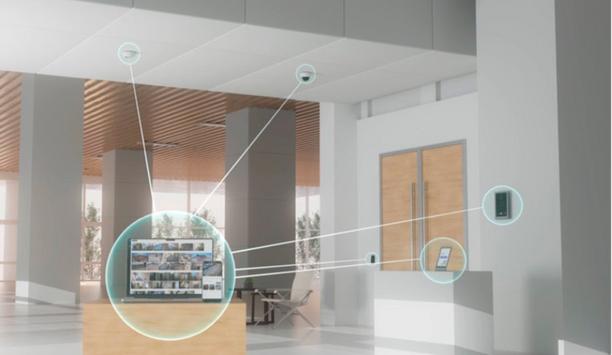
5 ways to strengthen physical security with an integrated system
Download
The benefits of Edge AI + Cloud for security systems
Download
Unified physical security
Download
The borderless control room
Download
Getting the most value from Software Subscription Agreements
Download
Preparing your organisation with quality situational awareness
Download
Is access control in the cloud more cost effective?
Download
Effective access control for museums and public spaces
Download
Is your access control system as secure as you think?
Download
Network Security Redefined: IP-Enabled Access Control
Download
Enhanced Ethernet Technology (ePoE)
Download
Do you know the weakest link of your access control system?
Download

Videos
Security software: Manufacturers & Suppliers
- Vanderbilt Security software
- Vicon Security software
- Honeywell Security Security software
- Bosch Security software
- DSX Security software
- Gallagher Security software
- Hanwha Vision Security software
- HID Security software
- TDSi Security software
- Nedap AEOS Security software
- CEM Security software
- Software House Security software
- CCTV Software Security software
- PAC Security software
- Dallmeier Security software
- FLIR Systems Security software
- Panasonic Security software
- Geutebruck Security software
- IDTECK Security software
- Verint Security software

Using artificial intelligence (AI) to automate physical security systems
Download
A modern guide to data loss prevention
Download
7 proven solutions for law enforcement key control and asset management
Download
The truth behind 9 mobile access myths
Download
Access control system planning phase 2
Download








